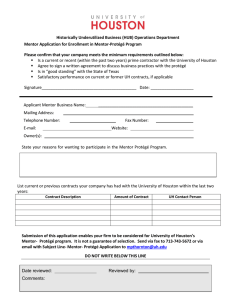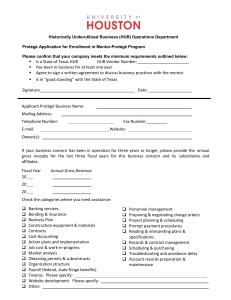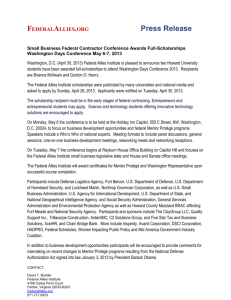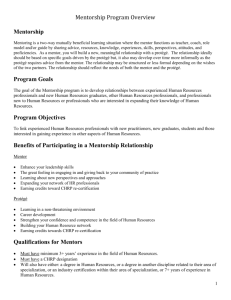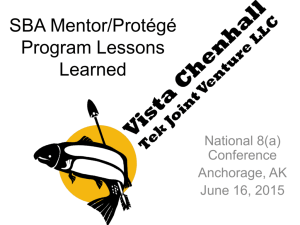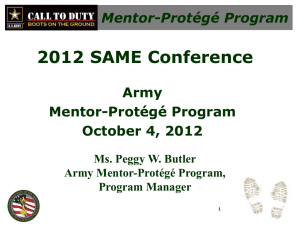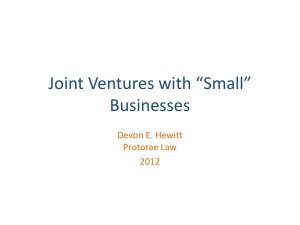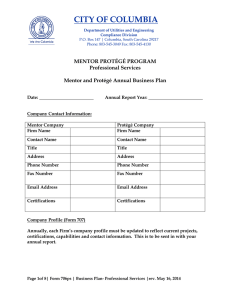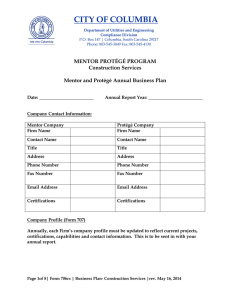SAM Mentor Program Training Presentation
advertisement
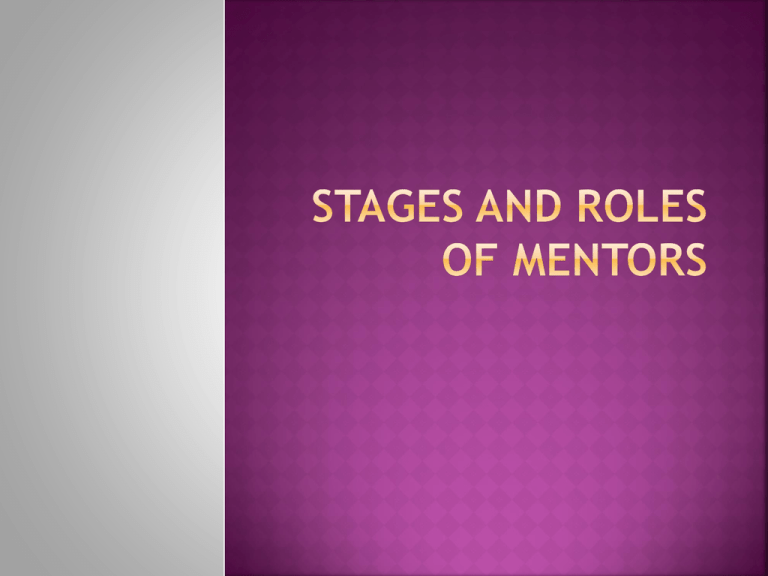
is uncertain and anxious. may mask anxiousness as “bravado” fears “losing face” in front of peers discovers new roles, relationships, and environment may fear mentor and hesitate to “open up” The Protégé knows about the “journey” has been there before recognizes the importance of letting the protégé explore gently urges protégé to speak of fears acts as a guide to shift protégé away from dangers in the road helps protégé build on strengths Reprinted with permission from NAESP The Mentor begins to see patterns in problems. offers support and encouragement. relaxes and their initial fear of mentor gives way to acceptance helps protégé focus on the process of solving problems rather than the problem gains new perspectives on previously difficult issues. provides nurturing during difficult times. sees the mentor as a partner and a colleague. begins to see independence in the protégé The Protégé The Mentor At some point the mentor must go in a different direction. The process has been about the protégé, not the mentor. Education Goals Reputation Graduation Rates Mill Levies Grants, Scholarships Business Goals Product Branding Profits Market Share Outperform Comp. Having a role model Enhanced leadership practices to improve instruction and student performance Improved leadership capacity Constructive challenges Better understanding of personal development Improved networking Increased personal learning Practice good development behaviors in a new realm Positively affect the lives of students through leadership development Help preserve a sacred right Improved instruction Improved student success Creates a culture for learning Facilitate Be a safety net Give structure and direction Empower protégés Exhibit empathy Enthusiasm Commitment DO Fix Fight protégé’s battles Dictate or control learning Tell what to do Discount feelings of protégé DON’T Excited to work with mentor Open to new ideas Positive attitude Wants to learn Not defensive Kid centered Collaborative Courageous Goal oriented • • • • SHARED VALUES, IDEAS & BELIEFS IDENTITY PAST EXPERIENCES FUTURE ACTION (HOW WE DO THINGS) The way students and staff feel about being in the building each day. PHYSICAL ENVIRONMENT THAT IS WELCOMING AND CONDUCIVE TO LEARNING SOCIAL ENVIRONMENT THAT PROMOTES COMMUNICATION AND INTERACTION AN EFFECTIVE ENVIRONMENT THAT PROMOTES A SENSE OF BELONGING AND SELFESTEEM AN ACADEMIC ENVIRONMENT THAT PROMOTES LEARNING AND SELF-FULFILLMENT Common Advice Buying a stronger whip Trying a new bit or bridle Switching riders Moving the horse to a new location Riding the horse for longer periods of time Saying things like, “This is the way we have always ridden this horse”. Appointing a committee to study the horse Arranging to visit other sites where they ride dead horses more efficiently Increasing the standards for riding dead horses Creating a new test for measuring our riding ability Comparing how we’re riding now with how we did 10 or 20 years ago Complaining about the state of horses these days Coming up with new styles of riding Tightening the cinch Blaming the horses parents. The problem is often in the breeding. Many reform efforts target the superficial aspects of schools, but disregard the “values, beliefs, behaviors, rules, products, signs, and symbols” (Donahoe, 1997), which serve as the very foundation of the school – the culture.
